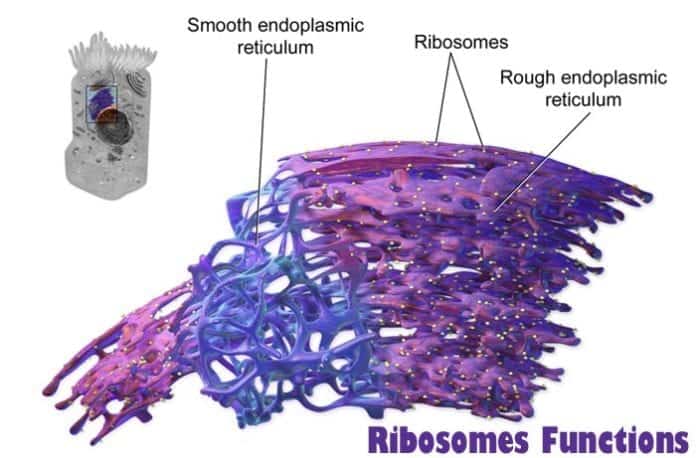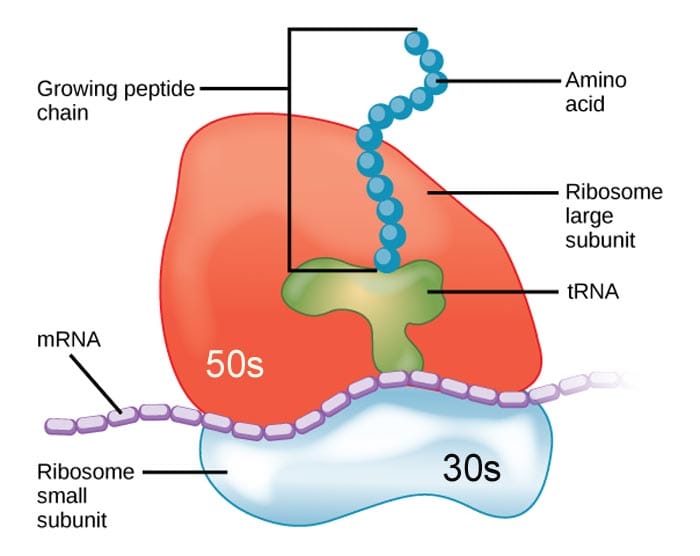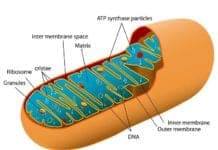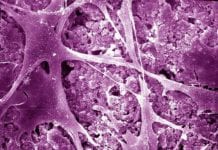
Ribosomes Function: Tracing its origin to more than 3 to 4 billion years ago, ribosomes are thought to have risen from the world of the ribonucleic acid (RNA). Initially, they were believed to have self-replicating mechanisms that eventually evolved to the synthesis of their own proteins after the appearance of the amino acids.
Interestingly, these evolutionary changes that occurred in the ribosomes have remained embedded in their biochemistry and still exhibited in their structures and functions. The ribosome was first discovered after subjecting the rat liver homogenates to differential ultracentrifugation.
Since this discovery, the ribosome continued to become one of the pillars where the basis of human knowledge about cellular structures and functions at the biological and molecular level has been constructed.
However, what exactly is a ribosome? In this post, we will explore more about this fantastic “protein machinery” as we uncover below ribosomes function, its structures, and variations in prokaryotes and eukaryotes. Let’s take a closer look.
Table of Contents
General Structure of Ribosomes

By definition, ribosomes refer to the highly-conserved macromolecular structures that are important for the synthesis of proteins in all domains of life. In other words, ribosomes are responsible for the translation of the mRNA (messenger RNA) into proteins.
Contrary to popular belief, ribosomes are not and cannot be classified as cellular organelles because of the absence of an enclosed double membrane.
Moreover, instead of a cellular membrane, ribosomes are merely macromolecules that are composed of proteins and RNA.
- The size of ribosomes is measured and described in Svedberg (S) units. Instead of length, these units are used to measure the rate of sedimentation of a colloidal protein solution in a centrifuge, as well as the molecular substitution. The reason behind this usage is because particles of ribosomes were first isolated from cell lysates through the use of a centrifuge.
- The names of ribosomes, as well as their sub-particles, were derived from the characteristics of sedimentation during the process of centrifugation.
- Nevertheless, the Svedberg (S) units of ribosomes are dependent on the shape and size of the particles and the properties of solutions during sedimentation.
- One Svedberg (S) unit is equivalent to 10-13. Two ribosomal subunits are equivalent to 40S and 60S subunits which have molecular masses of 1.5 million g/mol and 3.0 million g/mol respectively? Ultimately, a “complete” ribosome is called the 80S ribosome, which has a molecular mass of about 4.5 million g/mol.
- The modern structure of the ribosome is composed of the small and large subunits that join during the process of protein synthesis initiation, come together as amino acids are joined to the growing peptide chain, and eventually detach in connection with the freeing of the protein sequence.
- Each ribosome subsequence is an RNA/protein complex.
Despite having variable characteristics regarding the structure of the ribosomal outer regions, the structure of the common ribosomal core is believed to be highly conserved in all organisms.
The modern structure of the ribosome is not precisely chiral, and studies show that the primeval prokaryotic and eukaryotic ribosomes could have had less chiral specificity. This is extremely possible despite the lack of RNA components with distinct chiral properties and specific editing mechanisms.
Various studies suggest that the first peptides synthesized by early ribosomes could be composed of d-amino acids; thus, made them somewhat irregular.
![]()
Prokaryotic Ribosomes
Protein synthesis is a primary biological mechanism that is essential in all living organisms. Prokaryotic ribosomes, unlike eukaryotic ones, do not have distinct outer membranes. In this case, the ribosomes of prokaryotic organisms naturally float in the cell’s cytoplasm.
- Using an electron microscope, prokaryotic ribosomes were first observed as small granules particles in cells.
- Prokaryotes are composed of small and large subunits: 30S and 50S in both the Domain Archaea and Domain Bacteria. On one hand, their 50S subunit consists of a 5S rRNA and a 23S rRNA; on the other hand, the 30S subunit is composed of the 16S rRNA.
- In this case, the synthesis of the peptide bond happens in the peptidyl transferase center (PTC) of the 50S subunit. Meanwhile, the decoding site in the small subunit is where the recognition happens.
- So what joins the two subunits together? During the synthesis cycle, as well as the decoding site of the 30S subunit and the A, P, and E sites of the 50S subunit are linked together via the tRNA (transfer RNA).
- The synthesis of ribosomes in prokaryotic organisms occurs in the cytoplasm via the transcription of multiple ribosome gene operons.
Interestingly, the knowledge about the translation mechanism of protein is prokaryotic organisms is vital in the study of antibiotic resistance. Some microorganisms can effectively resist or work against a drug by simply inhibiting the ability of ribosomes to synthesize proteins.
![]()
Eukaryotic Ribosomes
Generally, the mechanism of the eukaryotic protein synthesis is quite similar to that of the prokaryotic protein synthesis. However, there are quite some differences between the two. Regarding location, eukaryotic ribosomes are located in the exterior of the rough endoplasmic reticulum (RER). However, they can also be found in other places like in the mitochondria, chloroplasts, or may float freely in the cytoplasm.
- Discovered in the 1950s, eukaryotic ribosomes became the basis for the identification of the 32 sites of protein synthesis, the discovery of the function of the nucleolus, and the elucidation of the RNA polymerases in eukaryotic organisms.
- The rRNA (ribosomal RNA) of eukaryotic organisms is composed of expansion segments that are somewhat similar to that of the ribosomes of prokaryotic organisms.
In eukaryotic organisms, ribosomes are made in the nucleolus, a part of the nucleus of the cell, and in the cytoplasm. The process is more complicated as the mere assembly involves more than 200 proteins.
![]()
Ribosomes Function
As alluded to earlier, ribosomes are complex yet highly sophisticated cell machinery essential in the synthesis of proteins. Nearly all proteins needed by prokaryotic and eukaryotic organisms are synthesized by the ribosomes. More specifically, the ribosomes function to perform the following roles.
1. Translation of information from the nucleus
Formed by two subunits joined together, a ribosome is used to translate the encoded information carried by the mRNA (messenger RNA) from the nucleus. Interestingly, numerous ribosomes can attach to a single strand of mRNA (such structure is known as a polysome). After a successful synthesis of a polypeptide chain, the two previously joint subunits separate. In the future, they may be either used again together or simply never join forever.
![]()
2. Joining amino acids together
With the use of the tRNA (transfer RNA), the ribosome joins together the amino acids that were gathered from the cytoplasm. Ribosomes can astonishingly link more than 200 amino acids per minute. With such rate, small-sized proteins can be formed easily. However, larger proteins would need at least two to 3 hours to be completed. An example of this would be the muscle protein titin which is composed of more than 30,000 amino acids.
![]()
3. Transmission of the polypeptide chain
After the formation of a functional polypeptide chain, the protein product will now fold to create a three-dimensional working structure (however, some proteins may have started folding into this form even during the start of the synthesis). After this, the ribosome will now export it to the cytoplasm.
The importance of ribosomes lies mainly on their ability to synthesize functional proteins. Ribosomes primarily work with the genetic material DNA (or RNA in some cases) to perform this function. The genetic material, which is not only crucial for one’s identity, acts as the “blueprint” from where the process of protein synthesis is based upon.
- However, what makes thing more complicated is that the DNA is located inside the cell’s nucleus while the ribosomes are out in the cytoplasm. Hence, to address this, cells have to export the information from the nucleus to the ribosome.
- In living organisms, proteins are required for various physiological functions like damage repair and initiating chemical responses. Aside from that, ribosomes synthesize proteins in the form of enzymes that aid in the process of cellular respiration. DNA and RNA are also replicated using enzymes so the genetics would also be impossible. Furthermore, some proteins are even needed to synthesize one another.
- Taking these things into consideration, it is undeniable that life will not be possible with the absence of ribosomes.
![]()
For the last decades, the scientific community has witnessed the increase of the discoveries about the different structures and functions of the prokaryotic and eukaryotic ribosomes.
These works reflect the continuing search for the structure-function principles in ribosomes.
Given the continuously growing knowledge in this field, it is not difficult to think that many of these functions will eventually be understood in detail in the near future.
The elucidation of this information will contribute to greater knowledge about Cellular Biology, Physiology, developmental biology, as well as the management of diseases.
![]()

















